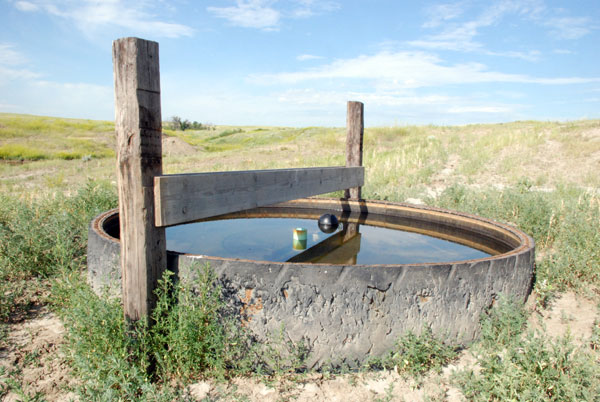Balancing the needs of water for these diverse uses will be one of the key challenges the world will face, experts say, and it’s important that agriculture be proactive and integral in guiding the formation of water policy.
November 20, 2012

The U.S. population is predicted to grow from 309 million in 2010 to 439 million by 2050. A significant portion of that growth is expected to occur in traditionally water-deficient areas like the southwestern U.S.
Can U.S. food suppliers meet that need? No question, say experts, but those teeming population centers will be clamoring for water for municipal use, as will industry.
“The future growth and prosperity of the U.S. as a nation will be limited by water,” Neal Wilkins, president and CEO of East Wildlife Foundation, told attendees of a recent Holt Cat Symposium on Excellence in Ranch Management at Texas A&M University-Kingsville.
“Across this nation, the majority of water that flows in streams or rivers, or recharges our aquifers, falls first on land that is in one way or another involved in agricultural or timber production. Roughly half of water consumption is for ag production, so there’s no way to have this dialog without the engagement of agriculture.”
Another Perspective: Food Waste Must Be Addressed Before We Can Feed The Growing Population
Wilkins was among a cadre of water and land-use experts exhorting attendees to assume a leadership role in critical water resource planning for the nation. They say it’s critical that landowners and agricultural producers engage at all levels and proactively lead in the strategic development of solutions to the long-term water issues facing the nation.
Spurring such a dialog, and outreach, was the purpose of the “Water: Agricultural Challenges and Strategies for the Future” symposium. The agenda was centered on a white paper unveiled at that meeting and available at krirm.tamuk.edu. Entitled “Agricultural Water: Protecting The Future Of Our Nation,” the document was formulated by a diverse group of producers with the aim of enumerating the issues surrounding the water debate, as well as guiding policy discussions around the overall issue.
The paper identifies three priority issues – water supply, water resource stewardship, and long-term water policy. The think tank’s recommendations on these issues include:
Effectively using existing water resources.
Responsibly increasing water supplies.
Encouraging continued investment in water infrastructure.
Protecting water rights ownership.
Incentivizing innovation and private investment in water resource management.
Clay Mathis, director of the King Ranch Institute for Ranch Management, which sponsored the project, says producers must advocate for agriculture. With only 2% of Americans today directly involved in production ag, and only 1% on a full-time basis, it’s important that producers get involved. The white paper is a tool and resource for producers to engage in the water debate and proactively lead the discussion, he says.
“Read the paper; carry the message,” another speaker said.
About the Author(s)
You May Also Like
.png?width=300&auto=webp&quality=80&disable=upscale)

.png?width=300&auto=webp&quality=80&disable=upscale)
